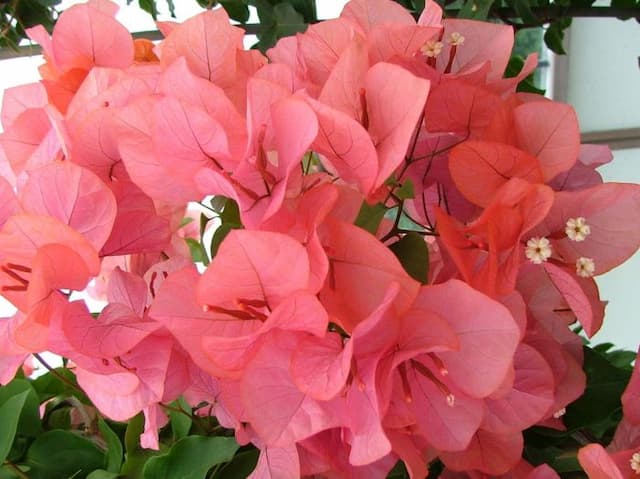Bougainvillea Bougainvillea glabra 'Doctor David Barry'

ABOUT
The Bougainvillea glabra 'Doctor David Barry' is a striking plant known for its vibrant and showy bracts, which are often mistaken for flowers. These bracts come in a lush, deep pink hue, creating a spectacular display of color. The true flowers nestled within the bracts are actually quite small, white, and inconspicuous. The leaves of the 'Doctor David Barry' are green, with a slightly glossy appearance, and are somewhat heart-shaped. The overall impression of this particular bougainvillea is one of lushness and vibrant color, making it a popular choice for ornamental use in gardens and landscaping where it provides a stunning and continuous splash of color.
About this plant
 Names
NamesFamily
Nyctaginaceae
Synonyms
Paper Flower, Lesser Bougainvillea
Common names
Bougainvillea spectabilis Willd., Bougainvillea buttiana Holttum & Standl.
 Toxicity
ToxicityTo humans
Bougainvillea is not considered highly toxic to humans, but it can pose some health risks. If ingested, parts of the plant can cause mild illness. Symptoms of bougainvillea poisoning may include nausea, vomiting, diarrhea, or mouth and throat irritation. Handling the plant can sometimes cause skin irritation or allergic reactions due to the presence of sharp thorns and the sap. It is recommended that individuals wear gloves when pruning or handling bougainvillea to prevent skin injuries and irritation.
To pets
Bougainvillea is generally not considered highly toxic to pets, but it can cause mild gastrointestinal upset if ingested. Symptoms of bougainvillea ingestion in pets may include vomiting, diarrhea, or drooling. Additionally, the thorns of the plant can cause physical injury, such as scratches or puncture wounds. While bougainvillea is not typically fatal to pets, it is best to keep animals from ingesting the plant or chewing on it to prevent discomfort and potential veterinary visits.
 Characteristics
CharacteristicsLife cycle
Perennials
Foliage type
Evergreen
Color of leaves
Green
Flower color
Varies
Height
15-40 feet (4.6-12 meters)
Spread
5-15 feet (1.5-4.5 meters)
Plant type
Climber
Hardiness zones
9
Native area
Brazil
Benefits
 General Benefits
General Benefits- Ornamental Value: Bougainvillea is widely appreciated for its colorful and abundant flowering, adding aesthetic appeal to gardens and landscapes.
- Drought Tolerance: Bougainvillea is highly drought-resistant, making it an ideal plant for arid climates and water-conserving gardens.
- Heat Resistance: It thrives in hot conditions, making it perfect for warm regions and reducing the need for shade or cooling measures.
- Low Maintenance: Once established, it requires minimal care, which is ideal for busy gardeners or those seeking low-maintenance landscaping.
- Soil Adaptability: Bougainvillea can adapt to a wide range of soil conditions, except for excessively wet soils, making it versatile for various locations.
- Privacy Screening: When grown as a hedge or on fences, it can provide privacy due to its dense growth habit.
- Pest Resistance: It has good resistance to pests, decreasing the need for chemical treatments.
- Long Blooming Period: It provides long-lasting color through its extended blooming season, often from spring to fall.
- Varied Uses: Suitable for a range of uses such as container gardening, hanging baskets, as a climbing vine, or as a ground cover depending on training and pruning.
- Attraction for Wildlife: The plant can attract hummingbirds and butterflies, which are beneficial for pollination and the natural ecosystem.
 Medical Properties
Medical PropertiesThis plant is not used for medical purposes.
 Air-purifying Qualities
Air-purifying QualitiesThis plant is not specifically known for air purifying qualities.
 Other Uses
Other Uses- Thorn Barrier: The thorny branches of bougainvillea can be trained along fences or walls to deter intruders or animals from entering certain areas.
- Soil Erosion Control: Bougainvillea, with its dense growth habit, can be used on slopes or banks to help stabilize soil and prevent erosion.
- Natural Art Medium: Artists sometimes use the colorful bracts of bougainvillea to create botanical artwork or to add vibrant colors to natural crafts.
- Source of Dye: The vibrant bracts can be boiled to extract natural dyes for fabrics, though this is not a common practice.
- Festive Decor: Due to its striking colors, bougainvillea can be used as a natural decoration during festive occasions, celebrations, or in parades.
- Landscape Aesthetic: With its cascading growth, bougainvillea is used to add aesthetic appeal to urban landscapes, roundabouts, and parks.
- Photography Backdrop: The lush, colorful appearance makes bougainvillea an attractive backdrop for outdoor photography sessions.
- Living Roof: In suitable climates, bougainvillea can be planted on rooftops for a natural, insulating green cover that blooms vibrantly.
- Sculptural Plant Art: Trained over frames or trellises, bougainvillea can be shaped into living sculptures for garden art or topiary displays.
- Mood Enhancer: Incorporating bougainvillea in living and work spaces can enhance mood by adding a sense of brightness and vibrant energy.
Interesting Facts
 Feng Shui
Feng ShuiBougainvillea is not used in Feng Shui practice.
 Zodiac Sign Compitability
Zodiac Sign CompitabilityBougainvillea is not used in astrology practice.
 Plant Symbolism
Plant Symbolism- Passion - Bougainvillea's vibrant color and abundant growth are often associated with intense passion and fervor.
- Beauty - Known for its striking appearance, the Bougainvillea represents beauty and visual appeal.
- Resilience - Because Bougainvillea can thrive in harsh conditions, it symbolizes resilience and toughness.
- Welcoming - In some cultures, Bougainvillea is planted around homes as a sign of welcoming and hospitality.
 Water
WaterBougainvilleas require a well-balanced watering regimen. During the growing season, which typically runs from spring through fall, water your Bougainvillea when the top inch of soil feels dry to the touch, approximately once a week. Reduce watering in the winter months, allowing the soil to dry out more between waterings. These plants are drought-tolerant once established, but they benefit from deep watering, so provide them with one gallon of water at each session, ensuring you moisten the entire root zone. It is crucial not to overwater as Bougainvilleas do not like soggy conditions which can lead to root rot.
 Light
LightBougainvillea thrives best in full sun conditions. Place the plant in a location where it receives at least six hours of direct sunlight daily, as this is essential for optimal bloom. They can tolerate some light shade but flowering will be diminished. A south-facing spot that gets ample sunlight is ideal for the Bougainvillea.
 Temperature
TemperatureBougainvilleas are tropical in nature and prefer temperatures ranging between 65°F and 95°F. They can survive minimum temperatures of 50°F, but frost can severely damage or kill the plant. Keep Bougainvillea protected or move it indoors during cold snaps in a region where temperatures dip below this range. An ideal temperature range to encourage blooming is 70°F to 85°F.
 Pruning
PruningPruning encourages Bougainvilleas to bloom profusely and maintains the desired shape. Prune in late winter or early spring as new growth begins. Cut back to remove any dead wood or overcrowded branches and shape the plant. Pruning after each flush of blooms can also stimulate more vigorous growth and flowering. The best time to prune heavily is after the last frost in spring to early summer.
 Cleaning
CleaningAs needed
 Soil
SoilBougainvilleas require well-draining soil with a pH of 5.5 to 6.0. A suitable mix for Bougainvillea is one-part perlite, one-part peat, and two parts pine bark. This combination ensures good drainage and aeration while retaining sufficient moisture.
 Repotting
RepottingBougainvillea should be repotted every 2 to 3 years or when the plant has become visibly root-bound. Younger plants may benefit from more frequent repotting, particularly if they are growing vigorously.
 Humidity & Misting
Humidity & MistingBougainvillea prefers average humidity levels. While adaptable, they thrive in environments with 50% to 60% humidity, avoiding extremes of dryness or high humidity.
 Suitable locations
Suitable locationsIndoor
Place in bright, indirect light and ensure pot has a drainage hole.
Outdoor
Plant in full sun with well-draining soil; protect from frost.
Hardiness zone
9-11 USDA
 Life cycle
Life cycleThe Bougainvillea, specifically the 'Doctor David Barry' variety, begins its life cycle with seed germination, where the seed must be in a warm and moist environment to sprout. After germination, the seedling stage follows, where it develops its first true leaves and a root system that allows it to absorb nutrients. As the plant enters the vegetative stage, it experiences rapid growth, producing stems, leaves, and thorns; this stage can last for several years as the plant matures. Upon reaching maturity, the Bougainvillea enters the flowering stage, characterized by the development of vibrant bracts surrounding small, inconspicuous flowers, typically during periods of dryness followed by short bursts of rain. After pollination, the plant produces fruit that houses seeds, completing its reproductive cycle and allowing for the dispersion of new offspring. The Bougainvillea 'Doctor David Barry' is a perennial plant, so this cycle of growth and flowering can occur annually for many years under proper growing conditions.
 Propogation
PropogationPropogation time
Spring-Early Summer
Bougainvillea, known for its vibrant display of flowers, is frequently propagated through tip cuttings. Typically, the ideal time to take cuttings is during the warmer months, from late spring to early autumn, when the plant is actively growing. To propagate Bougainvillea 'Doctor David Barry', gardeners should select semi-hardwood cuttings about 4 to 6 inches (10 to 15 centimeters) long from healthy, vigorous plants. Remove the leaves from the lower half of the cutting and dip the end in a rooting hormone to encourage root development. Then, plant the cutting in a well-draining soil mix, ensuring that at least two nodes are buried where leaves were removed. The cutting should be kept moist and in a warm, bright location but out of direct sunlight until roots have formed after several weeks.


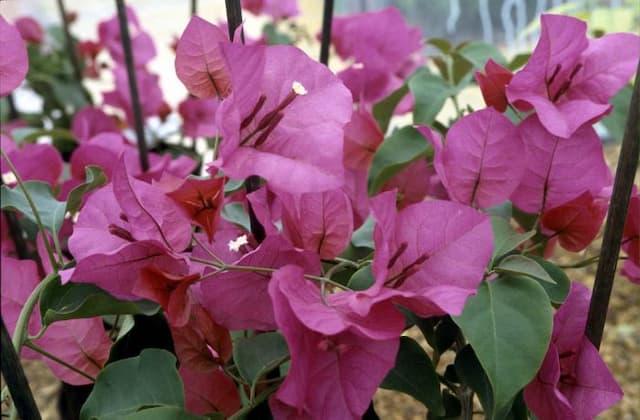
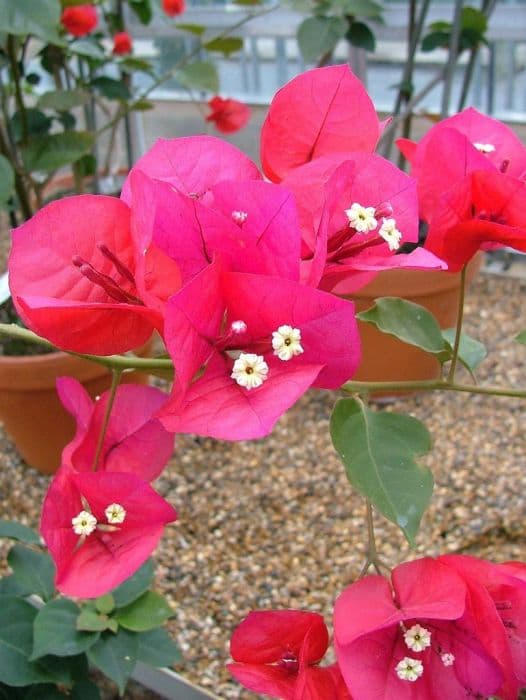
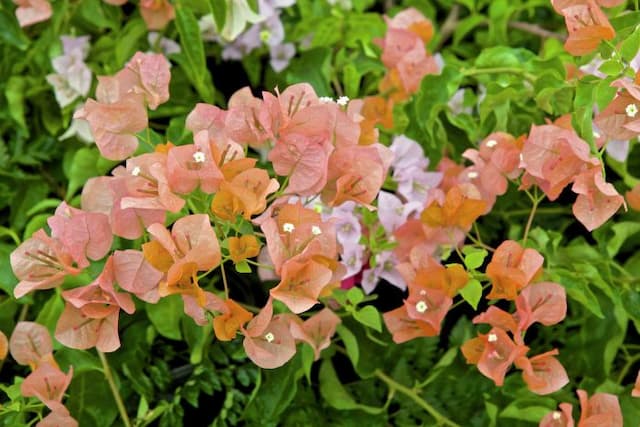
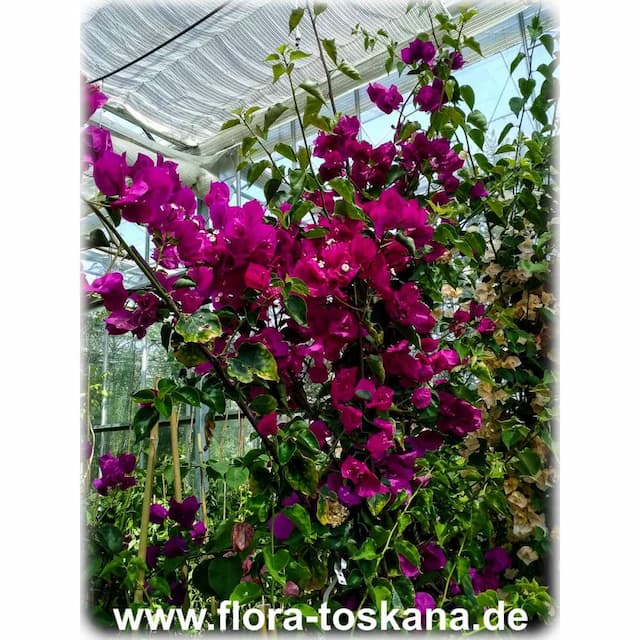
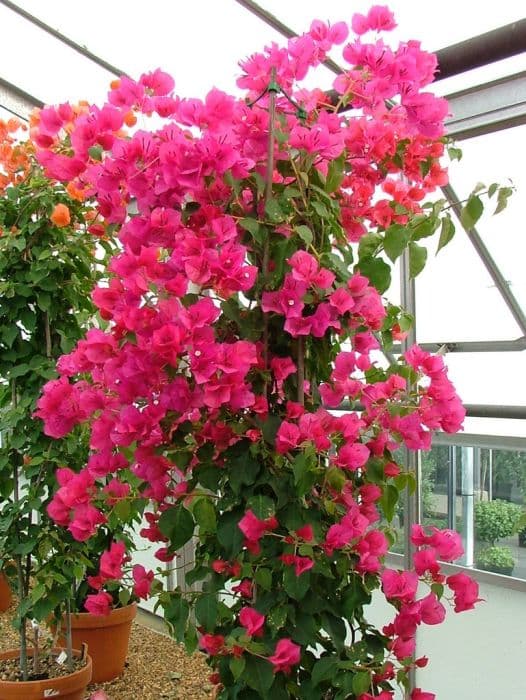
![Bougainvillea [Texas Dawn]](/_next/image?url=https%3A%2F%2Fplants-admin.emdemapps.com%2Fimages%2Fplants%2F%2Fimages%2F604b5f2598081.png&w=640&q=75)
